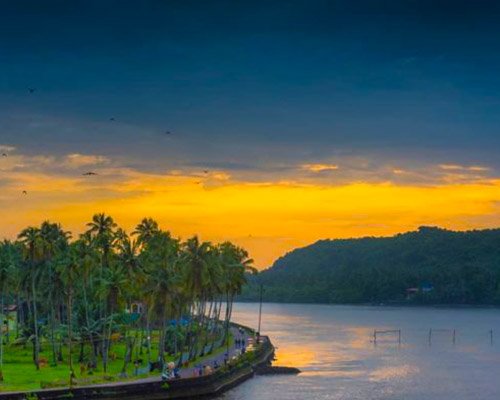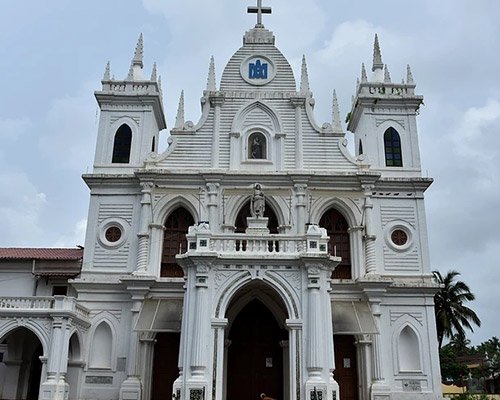About Siolim
Siolim is small village located 7 km away from Mapusa calls for a wonderful afternoon spent amidst its many fascinating churches. Siolim has its own way of life along the lines of Goan culture. The village is surrounded by the beautiful Morjim beach on one side and the Chapora river on the other. A day spent here makes for a lovely holiday experience. You can take a ride back into the past with the beautiful churches around. One of them being the Church of Mae de Deus, built at Sonarkhett hill between the two villages of Siolim and Assagao.
Other churches include Our Lady Of Sorrows, St.Sebastian Church and a church dedicated to St. Anthony. With scenic natural beauty surrounding the village and the splendid and gorgeous churches a part of its culture, your day here is going to be as lovely as insightful. A peek into the Goan culture and way of life will definitely make this trip that much more special.
The village of Siolim is situated to the extreme North-West point of the taluka of Bardez, on the left bank of the Chapora river. Siolim is also the last ‘bourgeois’ village in the north of Goa. After crossing the Chapora with the ferry the villages are simpler, more rustic. Siolim also provides the quickest escape to the unspoilt northern beaches, including Morjim, Mandrem and Arambol. It is vey easy to get to Siolim, which is only 10 minutes from Mapusa and about 30 from Panjim. If you are familiar with Goa, you can find a map on this site showing where it is exactly.
The village lives at a slow rhythm, according to the weather, the seasons and the harvests. Its slow paced life, once characterised as the way things were on the west coast still remains alive here. There may be a few noisy crossings and markets, but walk off the road into the fields and the hills and you will get to enjoy a taste of the real life of the place. A harvest in progress maybe, done the way it always was. A few fishermen waiting for the catch by the sluice gates. A carpet of fallen coconut palm leaves as you weave your way between the trunks. Here is a map to get around to some of our favourite places of Siolim
There are very few temples here, as most of them were destroyed during Portuguese rule, and those that are were built recently. However there are some built into the forest and are worth a hike.Siolim was one of the earliest places to come under the domination of the Portugese. Siolim is home to a major Church, St. Antony’s. The people believe that the church was the site for two miracles. You can see more information here. In fact the first church in Siolim was built as early as 1568, and was only the fifth church built by the missionaries of the Society of St. Francis of Assisi in Bardez. The first one was that of Reis-Magos built on the right bank of the Mandovi, and thereafter those of Candolim, Nagoa, Salvador do Mundo.
Siolim is home to a number of festivals, from the Feast of San Joao (saint John the Baptist) monsoon festival, during which a highlight is the boat festival organised in the rivulet just opposite Siolim House. Village youth course through the village with unique floral head-dresses to jump into wells (safely of course) to celebrate the festival and the villagers organise blessings to the local farmers and farms to ask for a plentiful harvest.
There is also the unique ‘Zagor’ festival that is celebrated by Hindus and Christians alike, at the end of January where the villagers organise an all night vigil. The festival starts at night and continues through the night, to pay obeisance to the local deity ‘zagorio‘.





